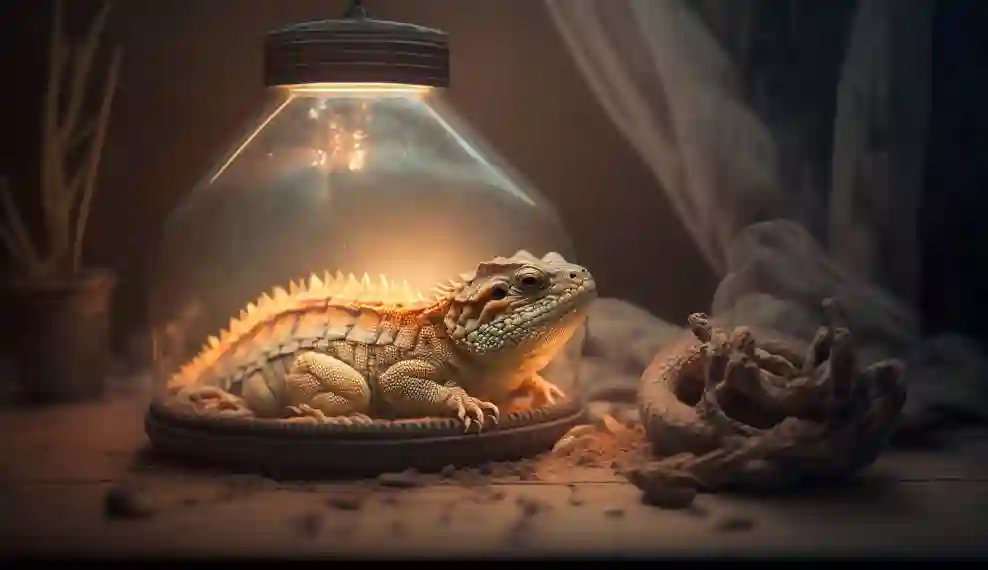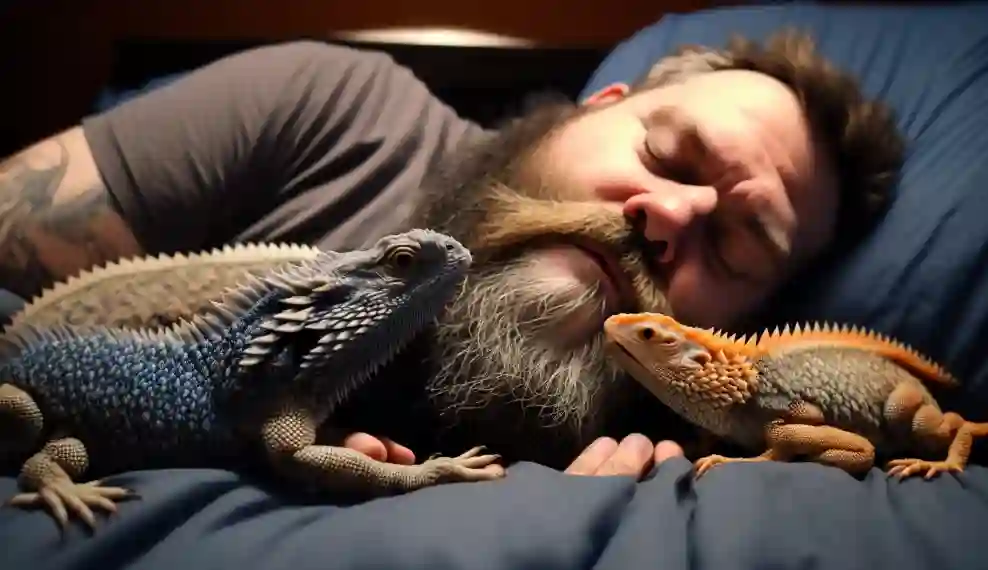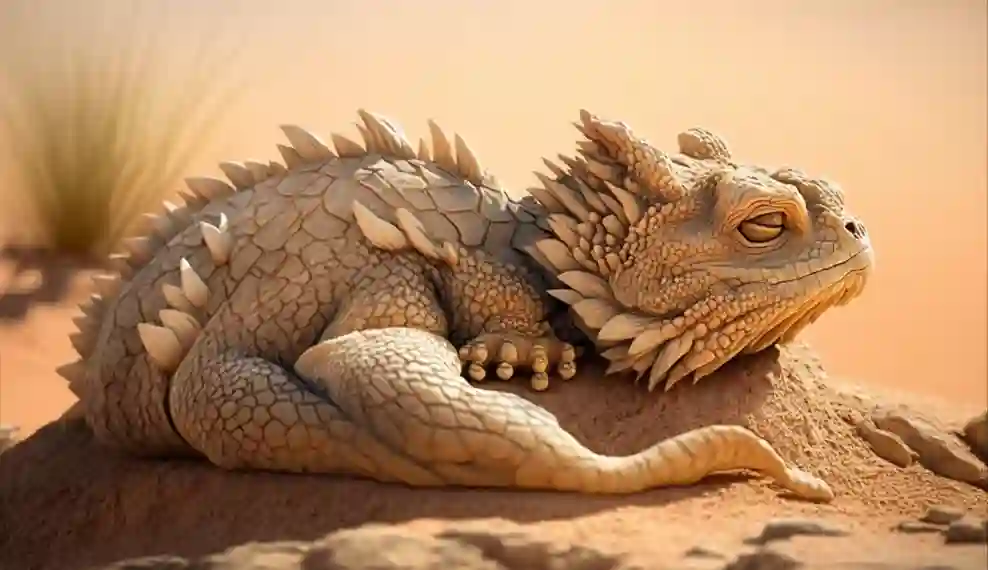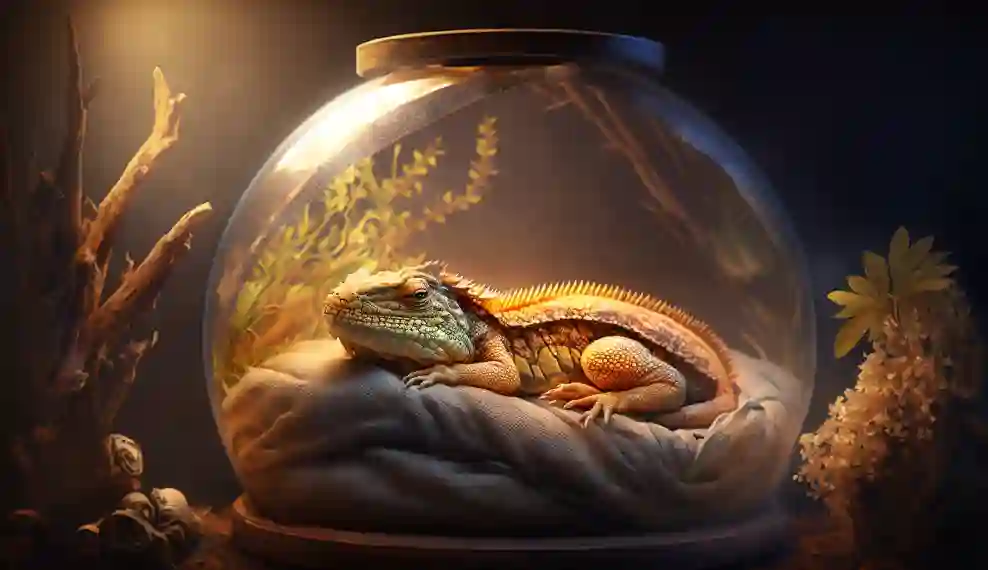Yes, bearded dragons breathe when they sleep. While they are sleeping deeply, their respiratory rates significantly decrease, making it more difficult to determine whether they are breathing or not.
Diurnal animals, such as bearded dragons, are awake during the day and sleep at night. They might sleep nonstop for days if they are brumating.
Respiratory System of Bearded Dragons: A Brief Overview

Before delving into the specifics of a bearded dragon breathing while asleep, let’s take a moment to examine its respiratory system.
Bearded dragons possess a set of lungs that facilitate the exchange of oxygen and carbon dioxide. Oxygen enters the lungs through the trachea, where it is absorbed into the bloodstream and transported to the body’s cells.
Carbon dioxide, a waste product of cellular respiration, is expelled from the body through the same process.
In addition to their lungs, bearded dragons have a unique anatomical feature called the glottis, located at the base of the tongue.
The glottis acts as a gateway to the trachea, opening, and closing as needed to regulate airflow. This feature allows bearded dragons to breathe through their mouths, which is particularly useful when their nostrils are obstructed.
Do Bearded Dragons Breathe When They Sleep? The Answer Revealed

Now that we’ve established an understanding of bearded dragon sleep patterns and respiratory system, we can finally answer the question: Do bearded dragons breathe when they sleep? The answer is yes, bearded dragons do indeed breathe while they sleep.
However, their breathing rate may vary depending on the sleep stage. During REM sleep, when the bearded dragon’s brain is more active, its breathing rate is typically faster and more irregular. In contrast, during Non-REM sleep, the breathing rate is slower and more consistent.
It is not uncommon for bearded dragons to experience brief periods of apnea, or temporary cessation of breathing, during sleep.
These brief pauses in respiration are generally harmless and should not be a cause for concern unless they persist for an extended period or are accompanied by other signs of distress.
Monitoring Your Bearded Dragon’s Breathing: Tips and Tricks

Keeping a close eye on your bearded dragon’s breathing habits can be beneficial in detecting any potential health issues early on. Here are some tips to help you monitor your pet’s respiratory health:
- Observe their breathing at rest: When your bearded dragon is awake but resting, take note of their normal breathing rate and pattern. This will give you a baseline to compare against when observing their breathing during sleep.
- Check for any signs of distress: While occasional pauses in breathing during sleep are normal, prolonged apnea or labored breathing could indicate a problem. Keep an eye out for other signs of distress, such as gasping, wheezing, or excessive mucus production.
- Maintain a clean and healthy environment: Ensuring your bearded dragon’s enclosure is clean and well-maintained can help prevent respiratory infections. Regularly clean their habitat, maintain proper temperature and humidity levels, and provide adequate ventilation.
- Schedule regular veterinary check-ups: Just like any other pet, bearded dragons should receive routine veterinary care. Regular check-ups can help catch any potential health issues early on and provide peace of mind regarding your pet’s overall health.
Conclusion: Understanding Your Bearded Dragon’s Sleep and Breathing Habits
In conclusion, bearded dragons do indeed breathe while they sleep, with their breathing patterns changing depending on the sleep stage. Understanding and monitoring your bearded dragon’s sleep and respiratory habits is essential to maintaining their overall health and well-being.
